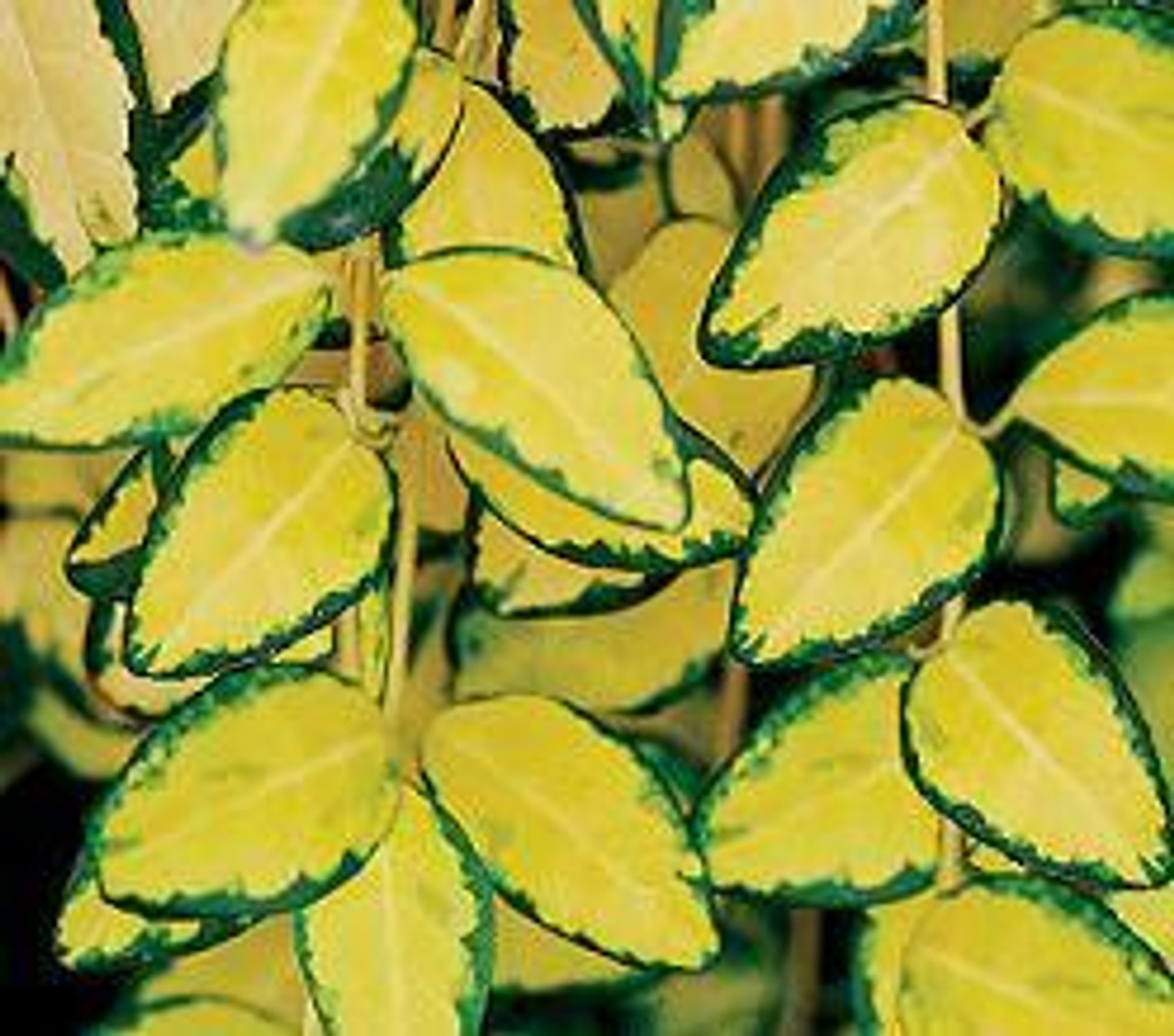Product Description
Vinca minor 'Illumination' PP12132 - (10)ct Flat
Common Name: periwinkle
Zones 4 to 9; tender.
Part shade to full shade.
Plants reach 4 to 6 inches tall and 24 to 36 inches wide.
mat-forming evergreen groundcover with trailing habit.
Space 12+ inches apart.
Vinca minor 'Illumination' is a popular cultivar of the common periwinkle, prized for its vibrant variegated foliage and charming blue flowers.
It is a versatile groundcover that brightens up shady areas and adds texture to gardens.
Key features:
- Foliage: The most striking feature is its bright golden-yellow leaves with narrow dark green margins. This variegation creates a luminous effect, hence the name 'Illumination'. The evergreen foliage provides year-round interest.
- Flowers: In spring, it produces delicate, violet-blue, pinwheel-shaped flowers that contrast beautifully with the foliage. While the blooms are not as abundant as in some other Vinca minor cultivars, they add a lovely touch of color.
- Growth habit: It is a low-growing, spreading perennial that forms a dense mat, typically reaching 4-6 inches tall and spreading 12-18 inches wide. It roots along the stems, making it an effective groundcover.
- Hardiness: It is hardy in USDA zones 4-8, tolerating a wide range of temperatures.
- Low maintenance: Once established, it is quite low-maintenance and drought-tolerant.
Growing conditions:
- Sunlight: It thrives in full sun to partial shade, but the foliage color is most vibrant with some sun exposure. In deep shade, the yellow variegation may fade.
- Soil: It prefers well-drained soil but tolerates various soil types.
- Moisture: It prefers moist soil but is drought-tolerant once established.
Uses in the landscape:
- Groundcover: Its spreading habit makes it ideal for suppressing weeds and covering bare ground under trees or shrubs.
- Banks and slopes: It helps stabilize soil on slopes and banks.
- Rock gardens: It adds a splash of color and softens the hardscape in rock gardens.
- Containers: It can be used as a spiller in containers and hanging baskets.
- Underplanting: It is a good choice for underplanting roses and shrubs.
Additional tips:
- Pruning: It can be pruned lightly to control its spread or to remove any dead or damaged stems.
- Propagation: It is easily propagated by stem cuttings or division.
- Deer and rabbit resistance: It is generally deer and rabbit resistant.
- Invasive potential: While less aggressive than the species Vinca minor, it can still spread vigorously in some conditions. It is important to monitor its growth and control its spread if necessary.
Overall, Vinca minor 'Illumination' is a valuable addition to gardens, providing bright foliage, charming flowers, and excellent groundcover. Its versatility and low-maintenance nature make it a popular choice for gardeners seeking an easy-care plant with long-lasting appeal.
Ten (10) plants in 4.5-inch containers per flat (or tray).
Other Details
The most important part of the plant is its root system. Healthy roots are the foundation of a healthy, vibrant plant. The type of plug container used is based on the specific needs of the plants. Perennials offered as bare root traditionally perform better when planted as bare root.Planted in a specialized mix, potted plants have well established root systems. Top growth stage will vary depending on the current life cycle and time of year when shipped. In Winter and early Spring dormant plants may be shipped. Dormant plants may be planted right away, even before the last frost date.
Most bare root varieties are field grown for at least one season, though Hemerocallis and Hosta are grown for two seasons. The bulk of the soil is removed during the harvesting process and the tops of most varieties are trimmed back to the crown. They are graded, packed in shredded aspen or sphagnum moss and stored in freezers until ready to be shipped.
See our Container Sizes and Bare Root Perennials pages for more information.
Plant information and care is provided in the Overview section, Plant Genus Page and general information is provided in the Planting Care & Guides. Additional questions can be asked on each Plant page.
Plant Spacing: Using the maximum mature spread or width of a plant to guide spacing, ensures space to grow to full size. To fill an area sooner, plant them closer together. Just remember, future thinning or transplanting may be needed.
Water: Keep a close eye on newly planted perennials, especially throughout the first growing year. Most early plant loss is due to too much or too little water!






